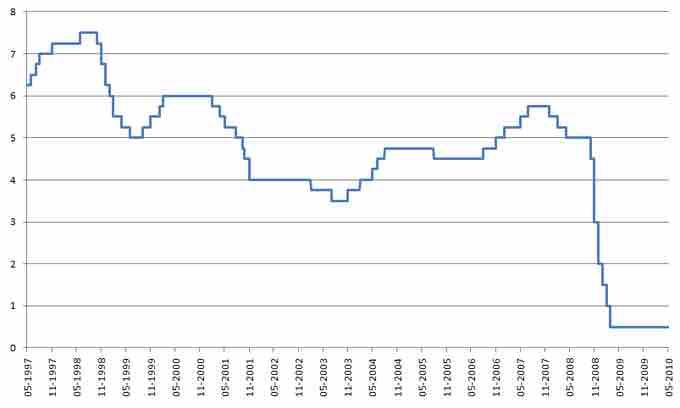Monetary policy is referred to as either being expansionary or contractionary. Expansionary policy seeks to accelerate economic growth, while contractionary policy seeks to restrict it. Expansionary policy is traditionally used to try to combat unemployment in a recession by lowering interest rates in the hope that easy credit will entice businesses into expanding. This is done by increasing the money supply available in the economy.
Expansionary policy attempts to promote aggregate demand growth. As you may remember, aggregate demand is the sum of private consumption, investment, government spending and imports. Monetary policy focuses on the first two elements. By increasing the amount of money in the economy, the central bank encourages private consumption. Increasing the money supply also decreases the interest rate, which encourages lending and investment. The increase in consumption and investment leads to a higher aggregate demand.
It is important for policymakers to make credible announcements. If private agents (consumers and firms) believe that policymakers are committed to growing the economy, the agents will anticipate future prices to be higher than they would be otherwise. The private agents will then adjust their long-term plans accordingly, such as by taking out loans to invest in their business. But if the agents believe that the central bank's actions are short-term, they will not alter their actions and the effect of the expansionary policy will be minimized.
The Basic Mechanics of Expansionary Monetary Policy
A central bank can enact an expansionary monetary policy several ways. The primary means a central bank uses to implement an expansionary monetary policy is through open market operations. Commonly, the central bank will purchase government bonds, which puts downward pressure on interest rates. The purchases not only increase the money supply, but also, through their effect on interest rates, promote investment.
Because the banks and institutions that sold the central bank the debt have more cash, it is easier for them to make loans to its customers. As a result, the interest rate for loans decrease. Businesses then, presumably, use the money it borrowed to expand its operations. This leads to an increase in jobs to build the new facilities and to staff the new positions.
The increase in the money supply is inflationary, though it is important to note that, in practice, different monetary policy tools have different effects on the level of inflation.
Other Methods of Enacting Expansionary Monetary Policy
Another way to enact an expansionary monetary policy is to increase the amount of discount window lending. The discount window allows eligible institutions to borrow money from the central bank, usually on a short-term basis, to meet temporary shortages of liquidity caused by internal or external disruptions. Decreasing the rate charged at the discount window, the discount rate, will not only encourage more discount window lending, but will put downward pressure on other interest rates. Low interest rates encourage investment .

Bank of England Interest Rates
The Bank of England (the central bank in England) undertook expansionary monetary policy and lowered interest rates, promoting investment.
Another method of enacting a expansionary monetary policy is by decreasing the reserve requirement. All banks are required to have a certain amount of cash on hand to cover withdrawals and other liquidity demands. By decreasing the reserve requirement, more money is made available to the economy at large.